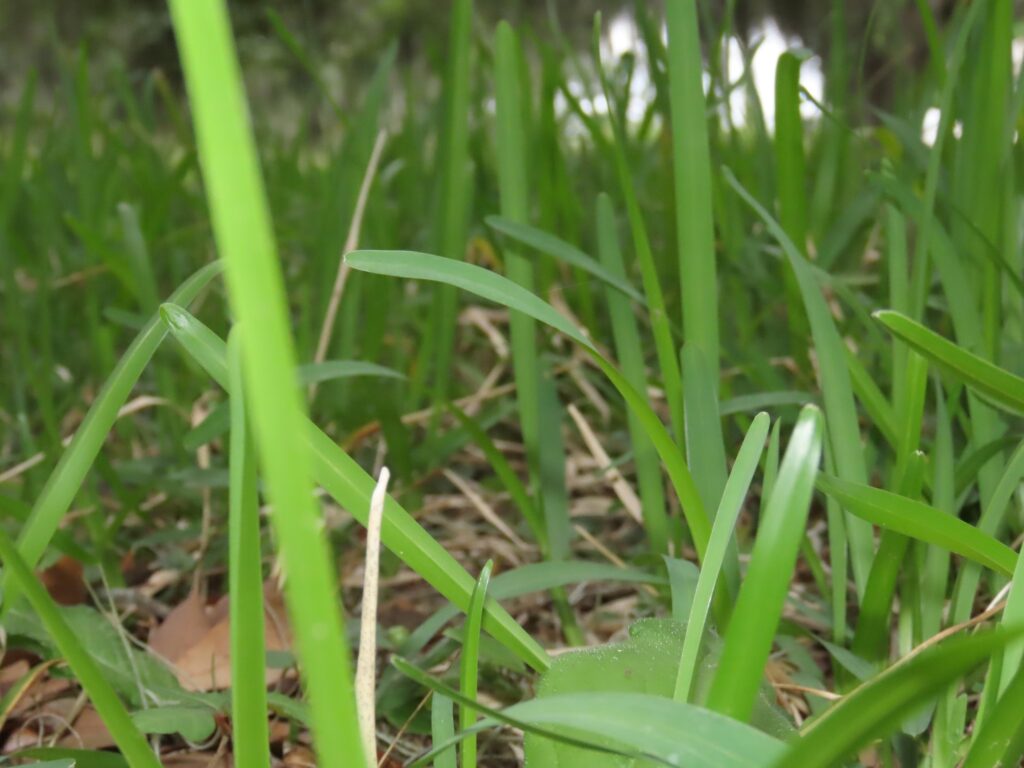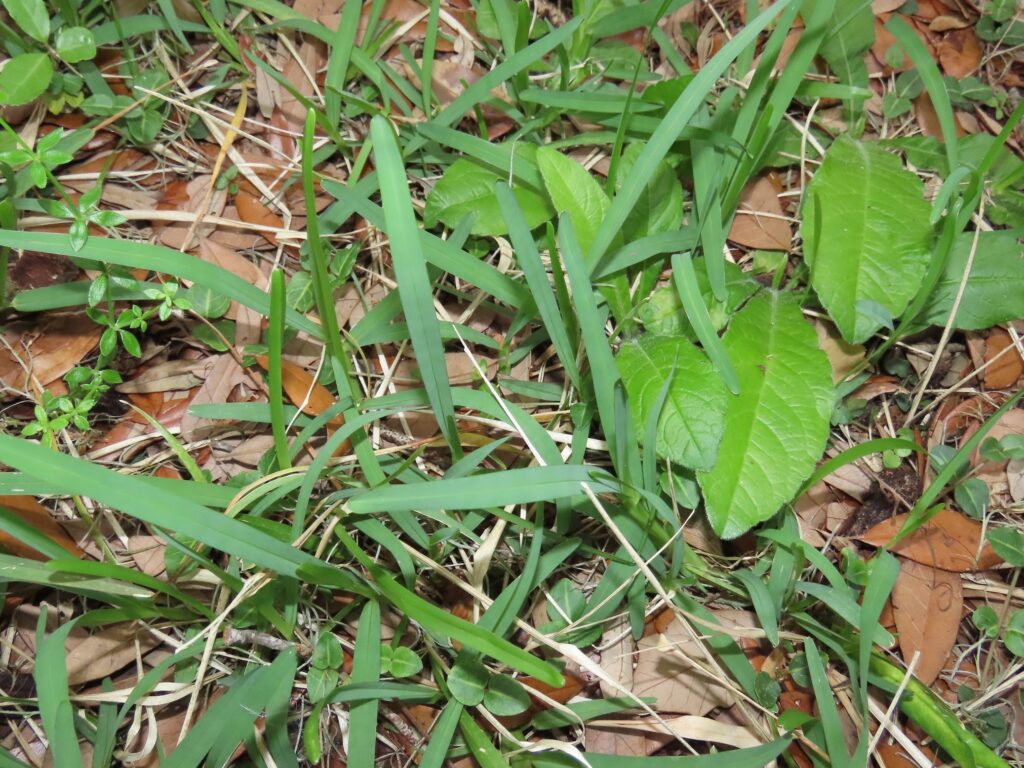




This week for Flora and Fauna Friday it’s a tough, lush, turf-grass that’s a possibly native to the Sea Islands, St. Augustine Grass (Stenotaphrum secundatum).
St. Augustine Grass, also called Charleston Grass, is a perennial, occasionally even evergreen, turf-grass. It is tolerant of heavy shade, wet soils, poor soil fertility, drought, and even saltwater intrusion, but does not tolerate full sun nor frost well. It grows as a groundcover with heavy stoloniferous stems that run along the surface of the soil, dropping roots as they go. Its leaves are a lush, deep verdant green, are soft and drooping, and can exceed a foot in length in ideal conditions, if left untouched. Its flowers are a flattened, thickened spike that rises straight up above the ground. It will bloom throughout summer. St. Augustine Grass is a host plant for many of our native butterflies’ grass-eating caterpillars, such as the Carolina Satyr, Southern Skipperling, Whirlabout, and Clouded Skipper.
St. Augustine Grass is found widely throughout the Sea Islands of South Carolina and Georgia and is planted extensively for lawns throughout the Lowcountry of South Carolina, as well as Florida, the Gulf Coast, and other subtropical climates worldwide. The natural range of St. Augustine Grass is something botanists are still debating and contesting. Many sources claim it is native to the coastline of the Southeast, others the Gulf Coast, and others say it is native to South Africa. A clear answer isn’t yet known. What I can tell you for sure is that the first place it was described by science was in 1788 by the botanist Thomas Walter from Charleston, South Carolina. More modern research appears to indicate that this grass is an extensive species-complex spanning from Charleston through the Gulf Coast and Caribbean down to South America and across the Atlantic Ocean to West and South Africa, with various lineages that have spread both naturally and by humans, including into the Pacific. All other species of the same genus, Stenotaphrum, are found in the Pacific Ocean. As it stands, the origin point of St. Augustine Grass as a species is still unknown. In my personal opinion, it likely originated in Africa and was spread to North America either naturally by ocean currents thousands of years ago or by Europeans during colonization sometime during the last five centuries.
Let’s finally address the elephant in the room. (Hello there Mr. Elephant!) Today I’ve spotlighted THE turf-grass of the Sea Islands, Charleston Grass itself. Turf-grass lawns and monocultural turf-grass lawn management have been catastrophic for native plant and insect biodiversity across the entire United States since the 1940s. A traditionally managed turf-grass monoculture contains no native plants and can sustain next to no native insects, let alone wildlife. I do not, and will never, advocate for creating nor maintaining a turf-grass monoculture around your home, business, et cetera. But if I can’t convince you not keep a turf-grass lawn, then at least pick the lesser of the evils. In my opinion, the old wild-type variety of St. Augustine Grass is the closest thing to a native turf-grass we have in the Lowcountry. I’ve inherited some amount of St. Augustine Grass in every lawn or park I’ve ever managed and I can tell you from firsthand experience that, when managed tactfully, it will support some native wildlife and won’t exclude all other native plants. It is by no means a team player and will crowd out many smaller plant species. Yet if left shaggy, and the “weeds” left alone, St. Augustine Grass can provide wildlife value and management utility in our coastal landscape, without exacerbating the harm already done, and can be readily converted to a more natural botanical community later on. However, a native grassland or meadow will always be the best replacement for any lawn.